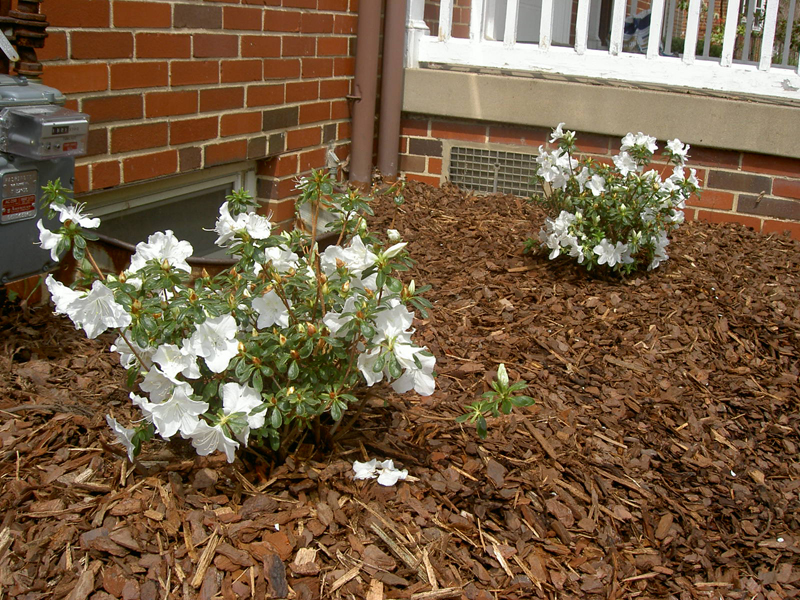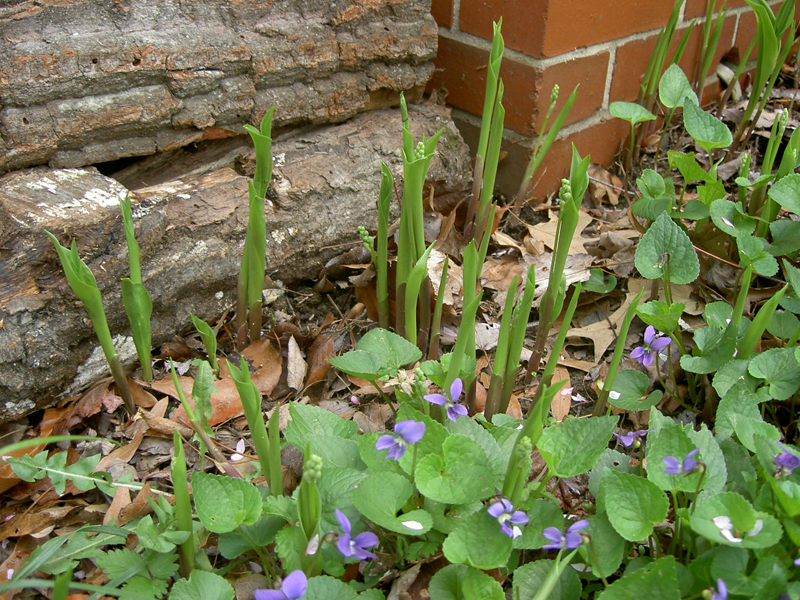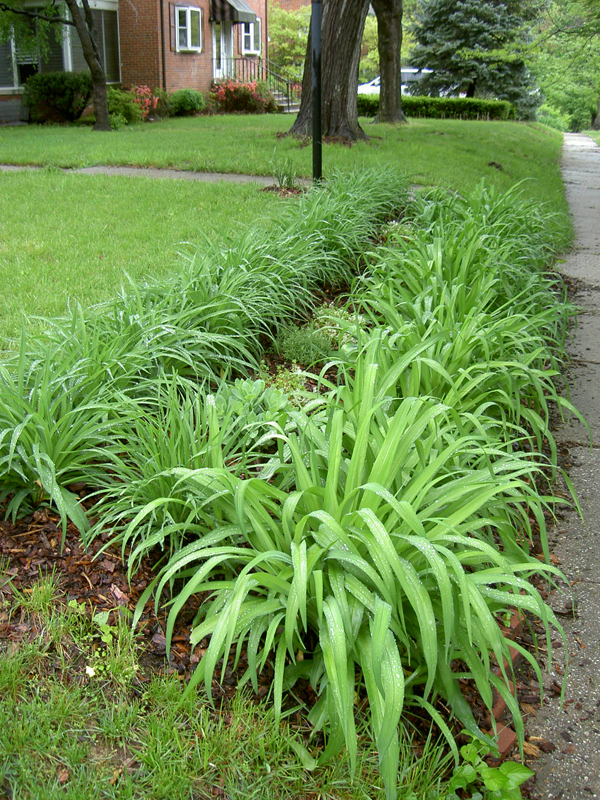
The front daylily bed, exploding with growth.
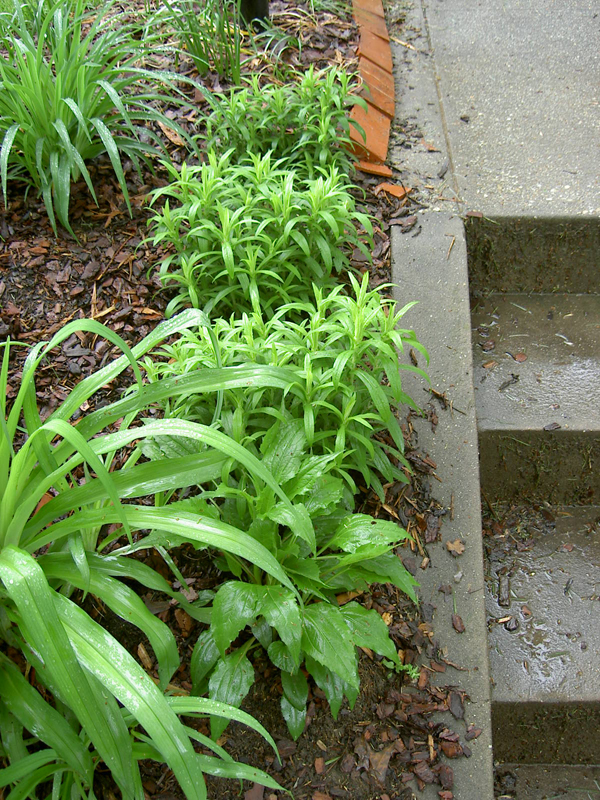
Aster at the end of the front bed, looking like it might actually get bushy this year.
It’s been raining! This is a good thing, both for the new shrubs and the region as a whole. Coming from farmland, I’m always appreciative of the rain, but this year more than ever after last year’s drought. The rain and other commitments have kept me from charging full speed ahead on the yard. I’ve mown the lawn, but it’s mostly been a sit-back-and-watch-things-grow sort of week. I’m glad to see the aster coming up so lushly, as it’s been quite scruffy for the past two years. It’s susceptible to pests, but it’s been hard to tell how what was a pest and what was simple lack of water; my philosophy on yard plantings has been ‘survive or die with the water that falls from the sky’ which meant that last year was hard on a lot of things. This year, though, they all seem to be recovering pretty well, so we’ll see how it goes.

The pink azalea at the side of the house coming into bloom.
Azaleas are extremely popular in this area, for reasons which no one has quite been able to explain to my satisfaction. I understand that there are native varieties, but it’s not clear to me which those are. At any rate, our yard included fewer azaleas than most when we acquired it—only two—and I’ve been trying to keep them alive. Knowing absolutely nothing about azaleas, this has been a bit of a challenge. As with everything else in the yard, they were quite scraggly when we moved in. Following the advice of one of my many ‘help me, I know nothing about flowers!’ books, I pruned them back relatively hard last year before they bloomed. They both did bloom, the white one in the front foundation bed and the pink one around the corner of the house. With last year’s drought and the warm winter that caused them to put out buds in February, which all promptly died in March’s freezing weather, they didn’t exactly fill in as much as I’d hoped. I’ve been on the verge of fertilizing the front one for weeks, as it was yellowed and half-dead looking, but the rain seems to have revived it. It’s not likely to bloom this year, but it’s putting out fresh green leaves and perking up quite a bit, so I’ll hold off on the fertilizer for now. I have no objections to fertilizer, I just haven’t cleared and mulched that bed yet, so I wasn’t relishing clearing away the leaf muck to properly apply the HollyTone. If we have a similar winter next year, I’ll get organized to treat it a bit next spring. I promise.

The self-seeding poppy bed just starting to come into bloom.
One of the areas of the yard that’s thriving from neglect is the poppy patch adjacent to our back walk. Each year I’ve let it go to seed and avoided mowing the sprouts as they come up in the spring, and each year I’ve been rewarded with a nice bright patch of poppies. I see no reason to keep them from doing their thing when there is so much else to be done in the yard. At some future point I figure that I’ll just pull them out before they set seeds if I don’t want them. In the meantime, they’re cheery and not hurting anything so there they stay. It appears likely that the bluebells, which are also in full bloom, will remain where they are at least until the autumn (note to self: mark their location with a little flag thingy so that you can dig up the bulbs and move them).
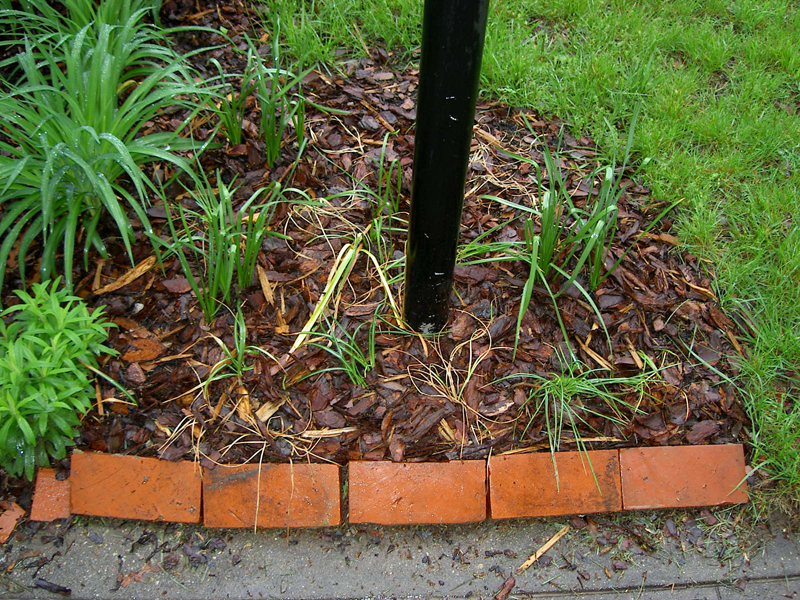
The crocus bed: humus-enriched, mulched, and edged.
In terms of my own labor in the yard this week, I did very little. I mowed the (front) lawn. I hired the tree people to spray bacteria on the Eastern tent caterpillar nest, which seems to have been successful as we’ve seen little caterpillar corpses on the back walk (not that I’ve been looking too closely). I pulled up dandelions by the dozens—some before they went to seed, even!—although still not nearly enough to keep them from cropping up again, especially given their prevalence through the whole block. And, I edged the new bulb bed with bricks to keep everything from running away down the sidewalk, added an inch or so of (store-bought) humus, and covered the whole thing with pine bark chips (my mulch of choice). I hold out absolutely no hope of getting any blooms in there this year, but instead am eagerly waiting to see what survives until next spring and what kind of flowers I might get then. To that end I’m just letting the scruffy greens do their photosynthesizing energy-storing thing.
My goals for May remain the same: weed, mulch, and remember that it doesn’t all have to get done right now.

